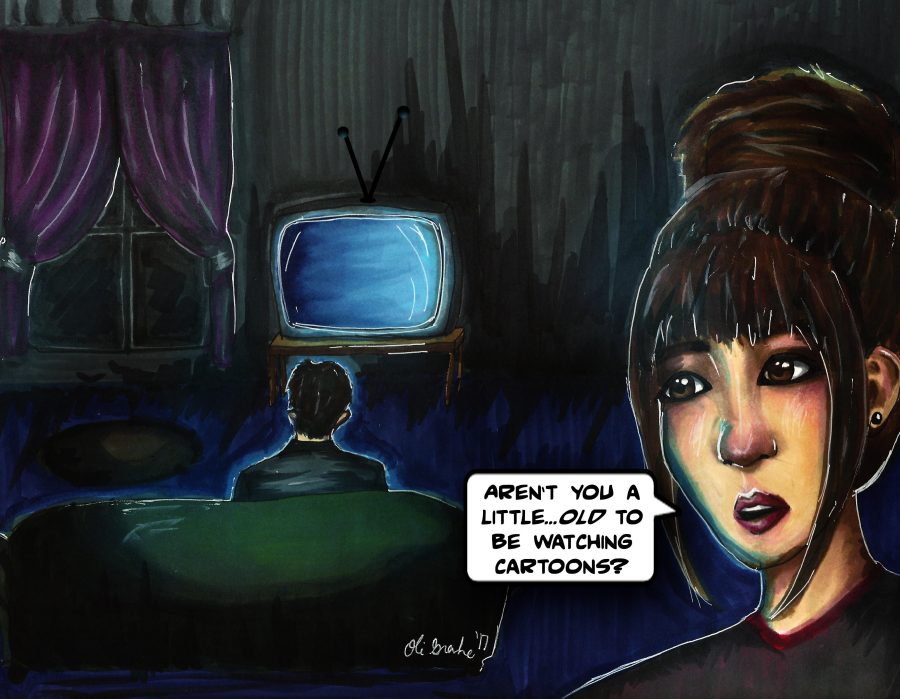Animation proves worthy of adults
Feb 14, 2017
Animation was a much respected medium when it was first created. It was used to inspire people during times of war, distract people from rough parts of their life, and give animators the chance to put their creative works on the big screen.
However, when home televisions were invented, their main purpose was to give children things to do while giving their parents time to work. This influenced the idea that cartoons were only for children, and that adults participating in cartoon watching were childish and weird.
These days, the age gap is still a problem. The phrases “kid’s show,” or “kid’s movie,” unfortunately still exist, which can cause teenagers and adults to want to avoid them in fear of being looked down upon.
Thankfully, popularity has been slightly improving, as small communities of teenagers show appreciation for various anime like Attack on Titan or Fullmetal Alchemist, and intelligent plot based cartoons such as Steven Universe and Gravity Falls. Not to mention movies like the How to Train Your Dragon series and the most recent Disney and Pixar movies such as Zootopia and Finding Dory are attempting to attract older audiences with more mature themes, clever humor, and nostalgia.
“I prefer animation over live action because there is a lot more freedom in animation.” Says animation fan Jon Pace.
Adult shows have recently risen in popularity with more dramatic, crude tones and more mature humor. While they did exist previously, not many had the deep plots and interesting philosophies to help form dedicated fan bases.
Even the first successful adult theatrical movie made using Computer Generated Imagery (CGI) was released recently, and made a good enough profit to potentially urge other creators to put more adult animated films in theaters to raise the popularity of animation among older age groups.
However, animation unfortunately may not get the attention it deserves for a long time. The bias it has faced likely will not fade for generations, and there will always be some people whose opinions will differ from the general consensus.
And even if animation’s discrimination does eventually fade, just waiting for people to respect it and hoping it all works out won’t solve anything. People need to spread positivity for animation and treat them like any big filmed blockbuster or exciting live action TV series, because one day, animation may be seen as a beautiful art form for all ages like it is meant to be.




